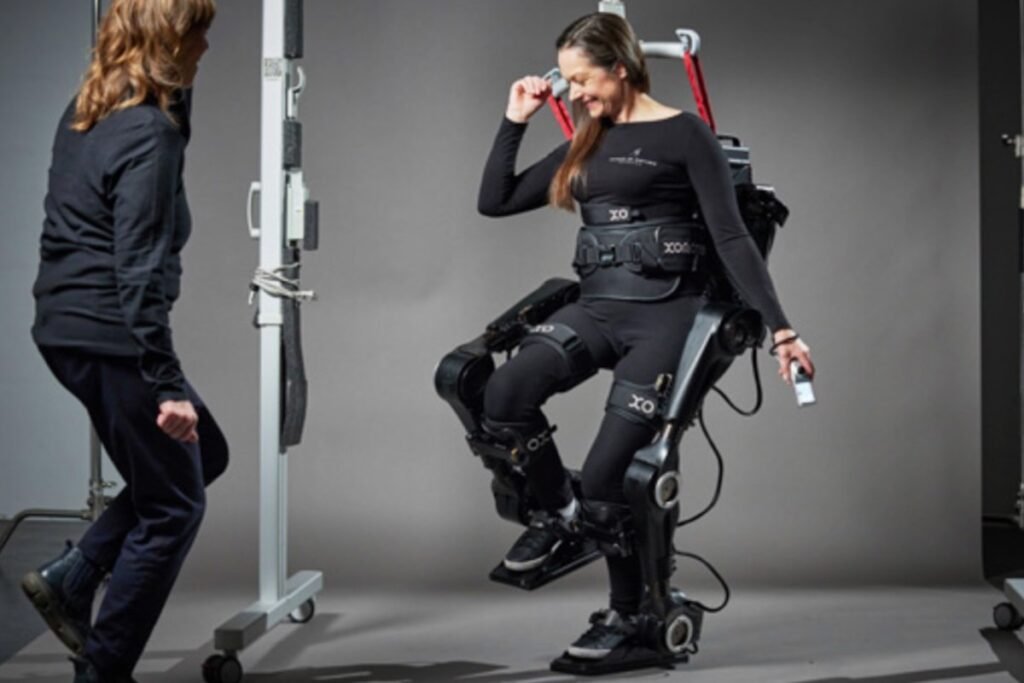Vancouver-based fashion designer Chloe Angus thought she would be confined to a wheelchair for the rest of her life after she was diagnosed with an inoperable benign tumor in her spinal cord in 2015, permanently losing mobility in her legs. .
But now she is using a state-of-the-art robotic exoskeleton known as XoMotion that can help disabled people self-balance, walk, side-step, climb stairs and squat.
“The first time I walked around with an exoskeleton was an eye-opening experience,” Angus said. “Many years have passed, but thanks to the exoskeleton I was able to get up and walk on my own without falling down. I felt like myself again.”
She added that this exoskeleton has the potential to completely change the world for people with movement disorders.
XoMotion is the result of 10 years of research and is a product of Human in Motion Robotics (HMR) Inc., a spinoff of Simon Fraser University. It is the brainchild of Professor Siamak Arzanpour and Professor Edward Park.
Arzanpour and Park, researchers in the Burnaby-based university’s Mechatronic Systems Engineering Department, began researching the device in 2014. They had a vision to enhance exoskeleton technology and give people with mobility challenges more mobility options.
“We felt there was an urgent need to help people with mobility impairments walk with a full range of motion again. At the time, exoskeletons could only allow them to walk forward. It was the only move possible,” Alzanpour said.
XoMotion allows people with mobility issues to get up and walk on their own without additional support.
“The user is in control,” he said. “In fact, they can walk independently without anyone’s help and perform all complex movements without the use of crutches in their arms.”
Sensors within the lower limb exoskeleton mimic the human body’s sense of logic to identify structures along the path and produce perfectly balanced movements.
Angus said that since receiving his diagnosis, he has been looking all over the world to find ways to make his life better.
“I was really surprised to find a team in my backyard at Simon Fraser University in Surrey,” she said.
The SFU professors, who first met as graduate students at the University of Toronto in 2001, co-founded HMR in 2016 to bring together a group of students, end users, therapists, and organizations to build the exoskeleton.
Through mutual connections at SFU’s Surrey campus, Arzanpour and Park were introduced to Angus. Angus worked as an end user testing the exoskeleton throughout the development phase, and he soon became a key member of the HMR team.
“Without Chloe and her inspiration, we would not be here today. Her contribution to our success is immeasurable,” Alzanpour said, adding that the technology could one day be used in public spaces such as shopping malls. We envision it becoming available as an assistance option in the field.
“When I look back and think about how much we have accomplished, I can say it would not have been possible without our amazing team,” he said.
Video produced by Alana Kelly

